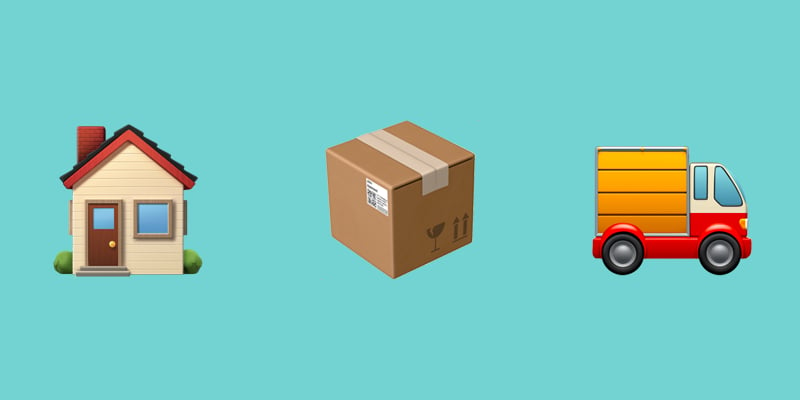The Ultimate Guide to eCommerce Warehouse Management for Small Businesses: Types, Tips, and Best Practices

Effective eCommerce warehouse management is critical for small business owners aiming to streamline operations, enhance customer satisfaction, and reduce costs. Whether you’re utilizing an in-house setup, outsourcing to a third-party logistics (3PL) provider, or adopting a dropshipping model, the right strategy can transform warehousing from a logistical challenge into a competitive advantage.
This guide explores the essentials of eCommerce warehousing: defining what it is, examining its importance, and breaking down the types available. It provides practical tips, highlights common mistakes, and shares best practices for managing an efficient warehouse — whether in your basement or with a professional provider. With insights tailored to small eCommerce businesses, we will help you choose scalable, cost-effective warehousing solutions to grow your business and meet customer expectations.

Table of contents
- 1 What is an eCommerce Warehouse?
- 2 The Importance of eCommerce Warehousing for Small Businesses
- 3 Challenges of eCommerce Warehousing for Smaller Businesses
- 4 eCommerce Warehouse Types Explained
- 5 How to Choose the Right Warehousing Solution for Your eCommerce Business
- 6 Best Practices for Managing an eCommerce Warehouse at Home
- 7 Common Mistakes in eCommerce Warehousing and How to Avoid Them
- 8 Final Words: Choosing the Right eCommerce Warehouse Solution for Your Business
- 9 FAQ
What is an eCommerce Warehouse?
An eCommerce warehouse is more than just a storage facility — it’s the logistical backbone of an online business. At its core, it’s a dedicated space where inventory is stored, managed, and prepared for shipping to customers.
Unlike traditional warehousing, which focuses on bulk storage for brick-and-mortar retailers, eCommerce warehousing thrives on agility, precision, and technology. It’s where every click, tap, and digital cart transforms into a tangible package, ready to reach its destination.
For smaller merchants, an eCommerce warehouse can range from a corner of a garage outfitted with shelves to a sophisticated third-party logistics (3PL) solution. Regardless of the scale, the goal remains the same: ensuring that customers receive their orders accurately and on time.
Let’s dive deeper into the many facets of eCommerce warehousing and uncover why it plays such a vital role in your business’s success.
The Importance of eCommerce Warehousing for Small Businesses
When customers click “Buy Now,” they expect a seamless experience from checkout to doorstep. No matter the size of your business, meeting these expectations hinges on one critical factor: a well-managed eCommerce warehouse. Warehousing isn’t just about storing products — it’s a strategic tool that can elevate customer satisfaction, streamline operations, reduce costs, and unlock scalability. Let’s take a closer look.
How Warehousing Impacts Customer Satisfaction
A properly managed eCommerce warehouse ensures that orders are processed, packed, and shipped with precision. Here’s how warehousing directly shapes customer satisfaction:
- Faster Delivery Times. Today’s consumers expect their orders to arrive yesterday. A well-organized warehouse minimizes delays by ensuring that inventory is easily accessible and efficiently processed.
- Error-Free Fulfillment. Nothing frustrates customers more than receiving the wrong product — or worse, no product at all. A streamlined warehousing system reduces human error in order picking and packing, guaranteeing that what customers receive matches their expectations.
- Smooth Returns and Exchanges. A warehouse equipped to handle returns efficiently improves customer trust and helps recover and restock items faster.
- Building Brand Reputation. Consistent, reliable order fulfillment reflects directly on a merchant’s brand. A well-managed eCommerce warehouse ensures that merchants deliver on their promises, creating positive customer experiences that lead to glowing reviews and repeat business.
How Warehousing Reduces Costs and Ensures Scalability
Small business owners often operate on razor-thin margins, making cost control a top priority. While warehousing might seem like a significant investment, the right setup can save money and lay the foundation for growth. Here’s how:
- Efficient Inventory Management. Overstocking ties up capital, while understocking leads to missed sales. A robust warehousing system helps small merchants strike the perfect balance, reducing waste and maximizing profits. Inventory tracking tools integrated into the warehouse process provide real-time insights, empowering smarter purchasing decisions. Some eCommerce platforms offer built-in capabilities, like Magento Inventory Management.
- Lower Shipping Costs. Strategically located warehouses can reduce shipping zones, leading to significant cost savings. A couple of decentralized eCommerce warehouses can drastically cut delivery expenses while targeting regional or local markets.
- Scalability Without Chaos. As order volumes grow, so does the complexity of fulfillment. An efficient eCommerce warehouse management provides the infrastructure needed to scale operations seamlessly. Whether it’s adding more shelving or upgrading to automation tools, a well-planned warehouse adapts to business growth without sacrificing performance.
- Reduced Labor Costs. Organized storage layouts and integrated technologies like barcode scanners and inventory management systems reduce the time and effort required to pick and pack orders. This translates to fewer hours spent on manual labor, allowing merchants to allocate resources more effectively.
Challenges of eCommerce Warehousing for Smaller Businesses
Alongside its significant benefits, eCommerce warehousing also brings a host of challenges for smaller merchants. Unlike large corporations with dedicated logistics teams and sprawling facilities, smaller players must navigate these hurdles on a tighter budget and timeline:
- Limited Space. Many small businesses operate out of small spaces, juggling warehousing with other operational needs. Finding a balance between sufficient storage and manageable costs is always tricky.
- Cost Pressures. Renting or owning a warehouse space, purchasing shelving units, and hiring staff are significant investments. For merchants just starting, these costs can strain financial resources.
- Logistics Complexity. Coordinating inventory tracking, order picking, and shipping from a small-scale warehouse often requires technology that smaller merchants may not be equipped with initially. That’s why partnering with a trusted vendor is essential to seamlessly integrate your eCommerce website with inventory management tools
- Keeping Up With Big Players. Competing with larger eCommerce businesses that offer ultra-fast shipping can feel like an uphill battle. Smaller market players often need to compromise profitability to match these standards.
For business owners, the importance of eCommerce warehousing is hard to overstate. The key is to start with a solution that matches your current needs while allowing room for growth. It’s not just about where your products sit — it’s about how they move, how fast they get to customers, and how well your business can scale with demand.
Whether it’s a humble in-house setup, a partnership with a 3PL provider, or experimenting with hybrid models, the right strategy can turn a logistical challenge into a competitive edge. By investing in efficient warehousing solutions tailored to your unique needs, you can turn logistics from a potential pain point into a competitive advantage. Let’s examine the common types of warehousing to help you better understand the opportunities available to smaller market players.
eCommerce Warehouse Types Explained
Below, we break down the three primary types of eCommerce warehousing: In-House Warehousing, Third-Party Logistics (3PL), and Dropshipping.
In-House Warehousing
In-house warehousing refers to managing your storage facility and handling all warehousing operations internally. It’s the classic “DIY eCommerce warehouse” approach, where you maintain control over everything — from organizing inventory to packing and shipping orders. The setup typically involves renting or buying space, equipping it with storage systems, and integrating inventory management tools.

For small eCommerce businesses, this might mean converting a garage or spare room into a functional warehouse or leasing a small commercial space. Regardless of scale, success hinges on creating an efficient system tailored to your business’s needs. The advantages of in-house eCommerce warehousing include:
- Full Control Over Inventory and Operations. When you manage your warehouse, you control every aspect of inventory handling. From tracking stock levels to shipping schedules, nothing is outsourced, allowing for greater flexibility and customization.
- Personalized Customer Experience. Want to add a handwritten note or branded packaging? In-house warehousing lets you create a highly personalized customer experience that can differentiate your brand in a crowded market.
- Cost Savings for Growing Businesses. While initial setup costs can be high, running an in-house warehouse eliminates recurring outsourcing fees. For businesses scaling steadily, this model can be more cost-effective in the long term.
On the other hand, you have to deal with such disadvantages as high upfront costs associated with renting or purchasing space, hiring staff, and acquiring equipment like shelving and barcode scanners.
Also, in-house eCommerce warehousing is associated with limited scalability. As your business grows, a small warehouse can quickly become insufficient. If you handle it in your basement, expanding space may not be possible.
And remember, you’ll need a solid understanding of inventory tracking, order management, and logistics to manage operations effectively.
Considering these challenges, here are some tips to help you optimize your in-house eCommerce warehouse management:
- Invest in Technology: Use inventory management software to track stock levels in real time.
- Organize Strategically: Implement systems like FIFO (First In, First Out) to streamline order processing. By ensuring that the oldest inventory is sold and shipped first, you can prevent items from becoming obsolete or expired, especially if you deal with perishable or time-sensitive products.
- Utilize Vertical Space: Maximize storage efficiency with vertical shelving units.
Third-Party Warehousing (3PL)
Third-party logistics involves outsourcing warehousing, inventory management, and fulfillment to a specialized provider. A third-party eCommerce warehouse handles the logistics for you, from receiving inventory to shipping orders. As a result, you can take advantage of the following benefits:
- Reduced Workload. 3PL providers handle labor-intensive tasks like order picking, packing, and shipping, freeing up time to focus on marketing, product development, or customer service.
- Access to Advanced Infrastructure. Many 3PL solutions come equipped with technology and systems that streamline fulfillment. Features like real-time tracking, optimized shipping rates, and integration with eCommerce platforms add efficiency.
- Scalability. As your order volume fluctuates, a 3PL provider adjusts its capacity to meet your needs, ensuring you’re not limited by space or labor constraints.
While 3PLs offer convenience, they also come with costs, typically structured as a mix of storage fees, order fulfillment charges, and shipping costs.
Also, outsourcing fulfillment means losing control over how orders are packed and shipped. You become dependent on a provider that directly affects your customer satisfaction.
Trusted names like , , and offer services specifically tailored to support small businesses, making it easier to scale efficiently and meet increasing customer demand.

Dropshipping
Dropshipping is an alternative eCommerce warehouse model where you sell products without physically storing inventory. Instead, when a customer places an order, the supplier ships the product directly to the buyer. This eliminates the need for warehousing.
As a result, you eliminate storage costs and significantly reduce operational complexity. With suppliers managing inventory, you avoid expenses associated with renting or maintaining a warehouse. Additionally, order fulfillment becomes effortless, as suppliers handle everything from packaging to shipping. This model is also highly scalable, without the limitations of physical space.
However, it comes with drawbacks. Profit margins are lower due to supplier fees, and you have limited control over inventory management and shipping times. There’s also the risk of stockouts if the supplier runs out of products, which can disrupt your operations.
Keep in mind that some eCommerce platforms are better suited for dropshipping, offering robust support for multiple integrations. SaleHoo, Doba, and CJ Dropshipping are a few examples of dropshipping platforms. For more details, check out our comprehensive guide featuring best dropshipping suppliers for Shopify.

How to Choose the Right Warehousing Solution for Your eCommerce Business
Selecting the right warehousing solution can feel like navigating a labyrinth of logistics jargon, operational needs, and budgetary constraints. For small merchants, this decision is critical — it influences efficiency, customer satisfaction, and ultimately, your bottom line. Let’s break down how to evaluate options and make the best choice for your business:
- Budget. Your financial resources dictate what warehousing options are viable. In-house warehousing requires a significant upfront investment, while third-party logistics comes with recurring service fees, and dropshipping shifts the cost burden to suppliers. Understanding your budget’s limits ensures you choose an option that won’t strain your finances.
- Order Volume. Smaller merchants with low order volumes might find in-house setups manageable, but scaling could demand external support. High order volumes often justify the expense of 3PL or a hybrid solution to maintain efficiency.
- Growth Potential. Consider where your business is headed. If growth is on the horizon, you’ll need a warehousing model that scales easily — something in-house setups may struggle with unless you plan for expansion early.
- Product Type. The nature of your products heavily influences your choice. Fragile, perishable, or oversized goods may require specialized handling that some solutions are better equipped to provide. If, for instance, you decide to store than in an in-hose eCommerce warehouse, your upfront costs may rise dramatically. Therefore, it’s better to choose a reliable 3PL partner.
The following table compares in-house, 3PL, and dropshipping eCommerce warehousing side by side:
| Factor | In-House Warehousing | Third-Party Logistics (3PL) | Dropshipping |
| Cost | High upfront investment, and low ongoing costs. | Medium to high, with recurring fees. | Low to none; suppliers handle storage. |
| Control | Full control over inventory and processes. | Moderate control; fulfillment is outsourced. | Minimal control; reliant on the supplier. |
| Scalability | Limited without significant upgrades. | Highly scalable with growing demand. | Instantly scalable with minimal effort. |
| Setup Complexity | Requires time and expertise to establish. | Simple onboarding but requires provider research and integration with your eCommerce platform | None; suppliers handle logistics. Integration with your eCommerce platform is required. |
| Best For | Merchants wanting full control over fulfillment. | Businesses with growing order volumes. | Entrepreneurs starting with low capital. |
For smaller market players, there’s no one-size-fits-all solution. What matters is finding a warehousing model that supports your goals, aligns with your resources, and adapts to your evolving business. After all, your warehouse isn’t just a place to store products — it’s the engine that powers your success.
If you have sufficient space in your basement, in-house warehousing could be a practical and cost-effective solution for your eCommerce business. This setup allows you to leverage the resources you already have, minimizing the need for additional investments in storage space. With the shelves in place, you can organize inventory efficiently, ensuring that products are easy to locate and manage.
Consider a 3PL eCommerce warehouse whenever it aligns with your business needs. If you experience rapid growth or find it challenging to manage fulfillment tasks in-house, a 3PL provider can be an excellent solution.
Dropshipping is a good option for small businesses that want to test new product categories or operate with limited capital. By eliminating the need for inventory storage, it allows merchants to launch or expand without significant upfront costs.
This model works especially well in niche markets, where unique or specialized products cater to a targeted audience with less competition. It’s also ideal for experimenting with new products, as merchants can test customer interest without committing to bulk purchases.
However, dropshipping is best suited for audiences with flexible delivery expectations, as shipping times depend on suppliers and can vary. You should also be mindful of challenges like limited control over inventory and quality. Partnering with reliable suppliers is key to ensuring a positive customer experience.
Best Practices for Managing an eCommerce Warehouse at Home
For smaller businesses, home-based warehousing is a common choice. Here’s how to turn your DIY space into a professional-grade operation.
Inventory Management Tips for In-House Warehousing
Efficient inventory management is the heart of successful eCommerce warehouse management. When working from home, every square foot counts, so organization is key:
- Categorize and Label Everything. Create logical categories for your products and label shelves, bins, or racks clearly. Use SKU codes to keep items easily identifiable and trackable. This not only saves time but also reduces errors when picking orders.
- Adopt the FIFO Principle. Implement the First In, First Out system to ensure older inventory gets shipped first. This is especially important for perishable goods or products with a shelf life, but it works wonders for non-perishable items too by avoiding forgotten stock.
- Conduct Regular Inventory Audits. Schedule frequent checks to ensure your physical inventory matches your digital records. Discrepancies can lead to delays or overselling, both of which damage customer trust.
- Optimize Storage Space. Use vertical shelving to maximize space and keep frequently sold items at eye level for quick access. Group similar products together to streamline order picking.
Software Tools for Warehousing and Order Tracking
Modern problems require modern solutions. Even a home-based warehouse can benefit from software tools designed for small businesses managing eCommerce warehouses:
- Inventory Management Software. Tools like or provide real-time inventory tracking, low-stock alerts, and seamless integration with eCommerce platforms like Shopify, Magento, or WooCommerce.
- Order Management Systems (OMS). Platforms such as or automate shipping label creation, streamline order processing, and provide customers with tracking updates.
- Barcode Scanning Apps. Apps like turn your smartphone into a barcode scanner, helping you keep inventory organized without investing in expensive hardware.
- Accounting and Reporting Tools. Use tools like to track inventory costs, shipping expenses, and overall profitability. For smaller merchants, having these insights is essential for growth.
- Firebear Solutions for Seamless Synchronization. Managing inventory across multiple channels and warehousing solutions can quickly become complex. Firebear offers powerful synchronization tools tailored to eCommerce platforms like Magento, , , and . Our solutions help small merchants integrate their storefronts with eCommerce warehouse management systems, ensuring real-time inventory updates, streamlined order fulfillment, and reduced errors. Whether you’re scaling up or refining your processes, Firebear provides the tools to connect your eCommerce operations seamlessly with your warehousing setup.
Tips to Streamline the Picking, Packing, and Shipping Process
Your home may not have the scale of an Amazon fulfillment center, but you can emulate their efficiency on a smaller scale:
- Organize a Picking Route. Arrange your inventory logically to minimize walking distance during order picking. A U-shaped or aisle-based setup can reduce time and effort when fulfilling multiple orders.
- Create a Dedicated Packing Station. Set up a space specifically for packing orders, equipped with tape, shipping labels, and packaging materials. This minimizes clutter and ensures a consistent packing process.
- Standardize Packaging. Invest in uniform packaging materials that fit most of your products. This simplifies packing and ensures professional-looking deliveries. Eco-friendly options also resonate well with today’s consumers.
- Integrate Shipping Tools. Use platforms like or to find the best shipping rates and automate label printing.
- Automate Wherever Possible. Automate repetitive tasks like generating invoices, updating tracking numbers, and sending shipping notifications. Most eCommerce platforms have built-in tools to implement this approach.
Managing an eCommerce warehouse at home requires a balance of creativity, organization, and technology. By implementing these best practices — and leveraging Firebear’s integration solutions — small business owners can create a warehouse operation that’s efficient, scalable, and capable of delivering top-notch customer experiences. After all, success isn’t about how big your warehouse is; it’s about how smartly you manage it.
Common Mistakes in eCommerce Warehousing and How to Avoid Them
Let’s dive into the most frequent eCommerce warehouse mistakes and how to sidestep them.
Overstocking or Understocking Inventory
Overstocking ties up valuable capital in unsold products and consumes precious storage space. On the flip side, understocking leaves merchants scrambling to fulfill orders, leading to delays, lost sales, and disappointed customers. Both scenarios are a direct hit to profitability and customer trust. Here is how to avoid it:
- Leverage Inventory Management Tools: Platforms like Zoho Inventory provide real-time inventory tracking and low-stock alerts, helping merchants maintain optimal stock levels.
- Analyze Sales Data: Use historical data and trends to predict demand accurately, especially during peak seasons.
- Adopt Just-in-Time (JIT) Strategies: For products with consistent demand, JIT inventory systems minimize storage requirements while ensuring timely restocking.
Ignoring Scalability and Growth Potential
Many small businesses design their eCommerce warehouse systems for today’s needs without considering tomorrow’s growth. As order volumes increase, these setups can quickly become inefficient, leading to bottlenecks and missed opportunities. However, you can address future issues with these simple tips:
- Plan for Growth Early: Choose warehousing solutions that can scale with your business. For example, modular shelving offers flexibility without requiring a complete overhaul.
- Consider Hybrid Models: Combine in-house warehousing for high-priority items with third-party logistics (3PL) for overflow or seasonal surges.
- Track Key Metrics: Regularly evaluate metrics like order processing time and storage capacity to identify when it’s time to scale up.
Relying on Manual Processes Instead of Software Solutions
Manual processes — like handwritten inventory logs or email-based order tracking — are prone to errors and inefficiencies. They become increasingly unmanageable as a business grows, leading to misplaced inventory, delayed orders, and unnecessary labor costs. If you don’t want to deal with these future problems, do the following:
- Invest in Automation: Use eCommerce warehouse management systems like or to automate inventory tracking, picking, and packing processes.
- Integrate with Your eCommerce Platform: Tools like Improved Import & Export extension can seamlessly sync your Magento website with a warehouse system, ensuring real-time updates and minimizing errors.
Running an eCommerce warehouse comes with its share of challenges. However, every mistake is an opportunity to improve. By avoiding common pitfalls like overstocking, ignoring scalability, and clinging to outdated manual processes, you can build efficient, adaptable systems that support long-term success..
Final Words: Choosing the Right eCommerce Warehouse Solution for Your Business
Warehousing is the backbone of any eCommerce operation, whether you’re a small merchant shipping a handful of orders a week or a growing business scaling to meet rising demand. The key to success lies in selecting a solution that aligns with your current needs and future ambitions. Each warehousing model — in-house, third-party logistics (3PL), or dropshipping — offers unique benefits and challenges, but the right choice depends on your business’s size, budget, and goals.
If control and personalization are your priorities, in-house warehousing allows you to create a tailored experience for your customers. However, it comes with higher upfront costs and requires careful planning to manage inventory effectively. For those looking to scale quickly or offload operational burdens, 3PL providers offer a seamless way to handle storage, picking, packing, and shipping, though they come at the expense of recurring fees. Meanwhile, dropshipping minimizes costs and eliminates the need for physical inventory, but it requires careful supplier management to ensure quality and timely delivery.
No matter which path you choose, there are common principles that apply across all warehousing strategies. Avoid pitfalls like overstocking or underestimating scalability, and invest in tools that automate processes, track inventory, and integrate with your eCommerce platform. Scalable systems and a proactive mindset can help small businesses stay ahead of challenges and prepare for growth.
Take the time to assess your needs, explore solutions, and, most importantly, think long-term. A well-planned eCommerce warehouse strategy today sets the stage for a thriving business tomorrow.
FAQ
What is an eCommerce warehouse?
An eCommerce warehouse is a storage facility where inventory is stored, managed, and prepared for shipment to customers. Unlike traditional warehouses, eCommerce warehouses prioritize efficiency and speed to handle online orders, ensuring accurate and timely deliveries. These facilities often leverage technology to streamline processes like inventory tracking and order fulfillment.
How to set up an eCommerce warehouse?
To set up an eCommerce warehouse:
- Choose a Location: Select a space that’s convenient for shipping and scalable for growth.
- Organize the Layout: Use shelves, bins, and clear labeling for easy inventory access.
- Implement Inventory Management Tools: Use software to track stock levels and automate processes.
- Create Workstations: Set up dedicated areas for packing, shipping, and returns.
- Optimize Processes: Use methods like FIFO (First In, First Out) for efficient order management.
What is a B2C warehouse?
A B2C (Business-to-Consumer) warehouse is a storage facility designed to handle direct-to-customer orders. These warehouses focus on quick order fulfillment, smaller package sizes, and personalized shipping solutions to meet consumer expectations for speed and accuracy.
Is Shopify a warehouse?
No, Shopify is not a warehouse. It’s an eCommerce platform that allows merchants to create and manage online stores. However, Shopify integrates with warehouse management systems (WMS) and third-party logistics (3PL) providers to help merchants streamline inventory storage, order fulfillment, and shipping operations.
How does eCommerce affect warehouse operations?
eCommerce has transformed warehouse operations by demanding greater efficiency, speed, and accuracy. Warehouses must adapt to handle smaller, frequent orders, integrate with technology for real-time inventory tracking, and optimize processes for faster picking, packing, and shipping. The rise of eCommerce has also increased the need for scalable and flexible storage solutions.
What is WMS in eCommerce?
A WMS (Warehouse Management System) in eCommerce is software designed to manage and optimize warehouse operations. It tracks inventory, monitors stock levels, streamlines order picking and packing, and integrates with eCommerce platforms. A WMS improves efficiency and accuracy in managing eCommerce warehouse processes.
What is eCommerce warehousing?
eCommerce warehousing refers to the storage and management of products sold online. It involves receiving inventory, organizing it efficiently, and preparing orders for shipment to customers. This process is vital for meeting customer expectations for fast and accurate deliveries in online retail.
Is WMS a type of ERP?
While a WMS (Warehouse Management System) and an ERP (Enterprise Resource Planning) system are related, they are not the same. A WMS focuses on warehouse operations, such as inventory tracking and order fulfillment, while an ERP covers broader business processes, including finance, procurement, and HR. Some ERP systems include WMS functionalities as part of their offerings.









